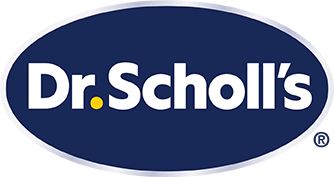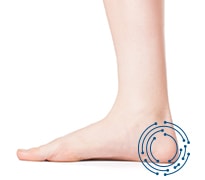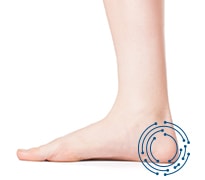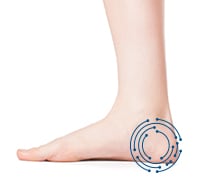The Facts on Achilles Tendinitis Pain:
WHAT IS ACHILLES TENDINITIS?
As you might have guessed by the name, Achilles Tendinitis involves inflammation inthe Achilles tendon. As the largest tendon in your body, it connects your calf muscles to the heel bones in your feet and helps you walk, run and jump. Symptoms of Achilles Tendinitis include pain or stiffness along the Achilles tendon, pain that appears in the morning or the day after exercising, or pain that gets worse with activity. There may also be swelling or thickening of the Achilles tendon.
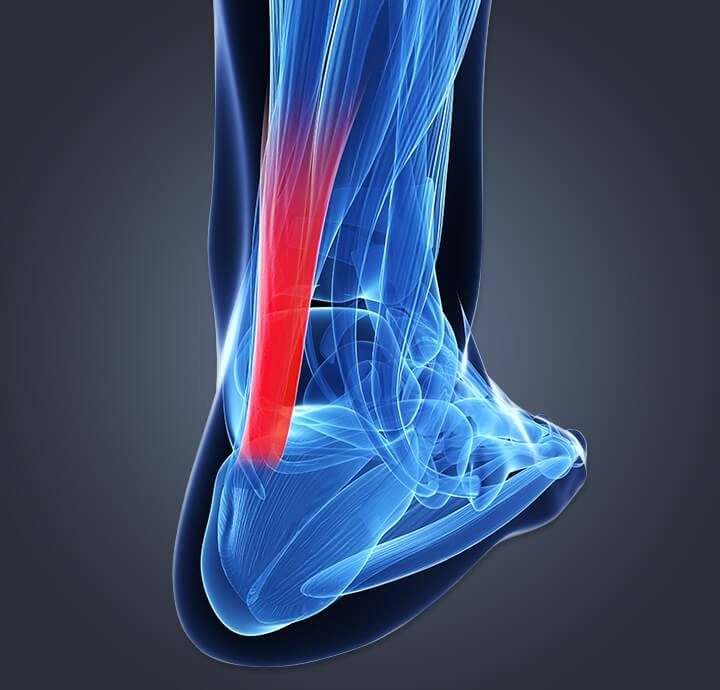
THERE ARE TWO KINDS OF ACHILLES TENDINITIS:
- Noninsertional happens when fibers in the middle of the Achilles tendon break down, swell up or thicken. It’s most common in younger, active people.
- Insertional happens in the lower part of your heel, where the Achilles tendon is attached or inserted into the heel bone. It can also be accompanied by heel spurs and may happen to anyone at any age, even if you’re not particularly active.
Both kinds may also include hardening in areas of the damaged tendon. Within the two kinds, there are two types: acute and chronic. The former can turn into the latter if you don’t manage the pain or if the stress on the Achilles tendon continues.
Only a doctor can accurately diagnose
WHAT CAUSES ACHILLES TENDINITIS?
According to the American Academy of Orthopedic Surgeons, there’s no specific injury that might cause the symptoms of Achilles tendinitis to appear. Rather, it’s caused when you put too much strain on the tendon by exercising too much or without giving your body a chance to warm up. Heel spurs and tight calf muscles can also cause Achilles tendon pain, which is why, for the latter, warming up and stretching before strenuous exercise is important.
Dr. Scholl’s® doesn’t make a product specifically for achilles tendinitis, but we do offer several products to help you move with comfort while the achilles tendon heals. Dr. Scholl’s Orthotics for Heel Pain help reduce the shock of heel impact. Dr. Scholl’s Massaging Gel® Heel Cups help raise your heel, which shortens the tendon and takes pressure off it while reducing heel impact and keeping shoes from rubbing on your Achilles tendon.”
DON’T LET ACHILLES TENDON PAIN STOP YOU IN YOUR TRACKS
If you think you have the symptoms of Achilles tendinitis, it’s important to talk to your doctor about your symptoms. He or she can not only diagnose the trouble but also provide treatment options that may include:
- Resting by either decreasing or even stopping pain-inducing activities
- Elevating your feet and legs to help reduce the strain
- Applying ice for up to 20 minutes several times per day as needed to help reduce any inflammation
- After the first 48 hours, apply mild heat to loosen the Achilles and promote healing
- Medication as directed by a doctor
- Special exercises or therapies to help strengthen calf muscles and reduce Achilles tendon strain
- Shoe inserts or orthotics that help reduce the shock of heel impact and relieve the Achilles tendon pain
- Heel cups or cushions to help raise your heel, which shortens the tendon and takes pressure off it while reducing heel impact and keeping shoes from rubbing on your Achilles tendon
Not a medical diagnosis. For information purposes only. If you have diabetes, poor blood circulation, or fragile skin, or symptoms are severe or persist, consult your podiatrist or physician before using products.
†SOURCE: Kadakia, A. R., MD. (2010, June). Achilles Tendinitis (S. J. Fischer MD & S. L. Haddad MD, Eds.). Retrieved January 24, 2017, from
http://orthoinfo.aaos.org/topic.cfm?topic=a00147
